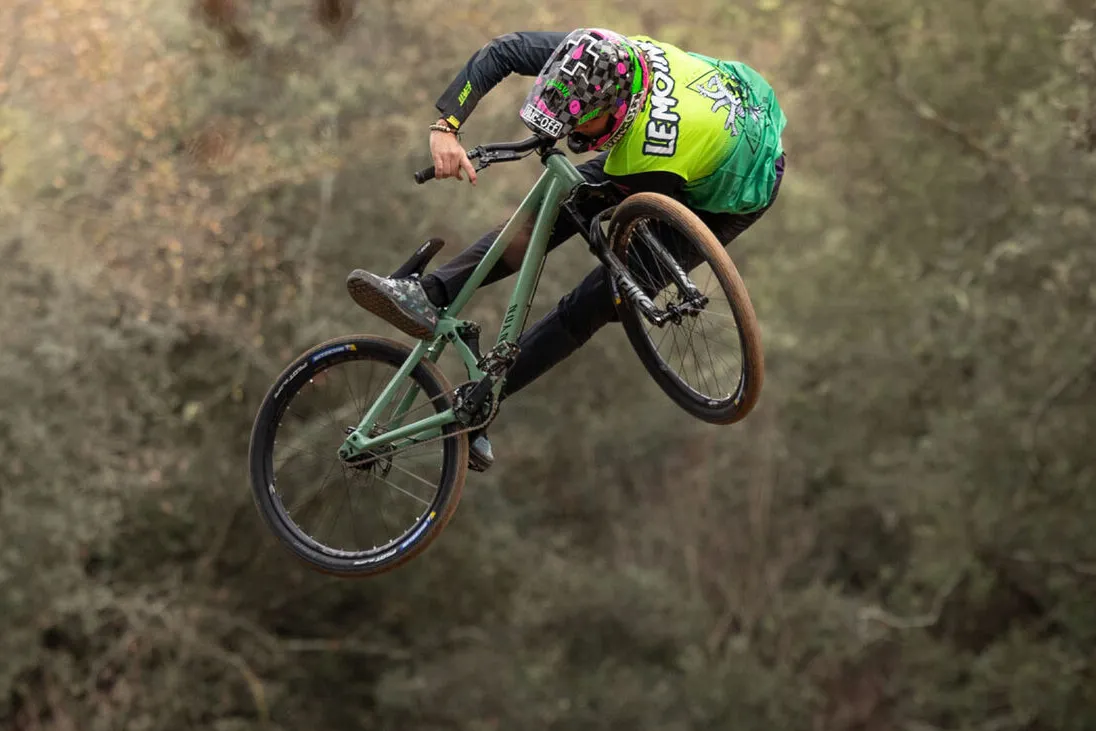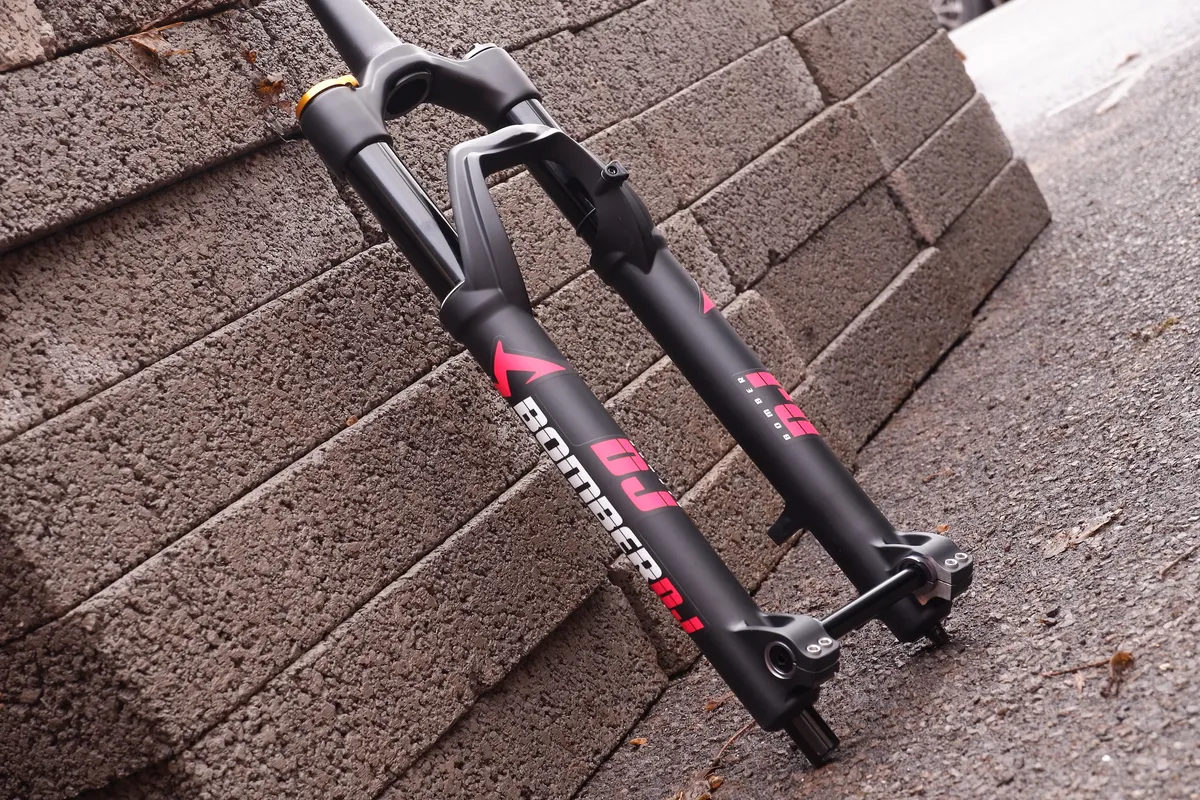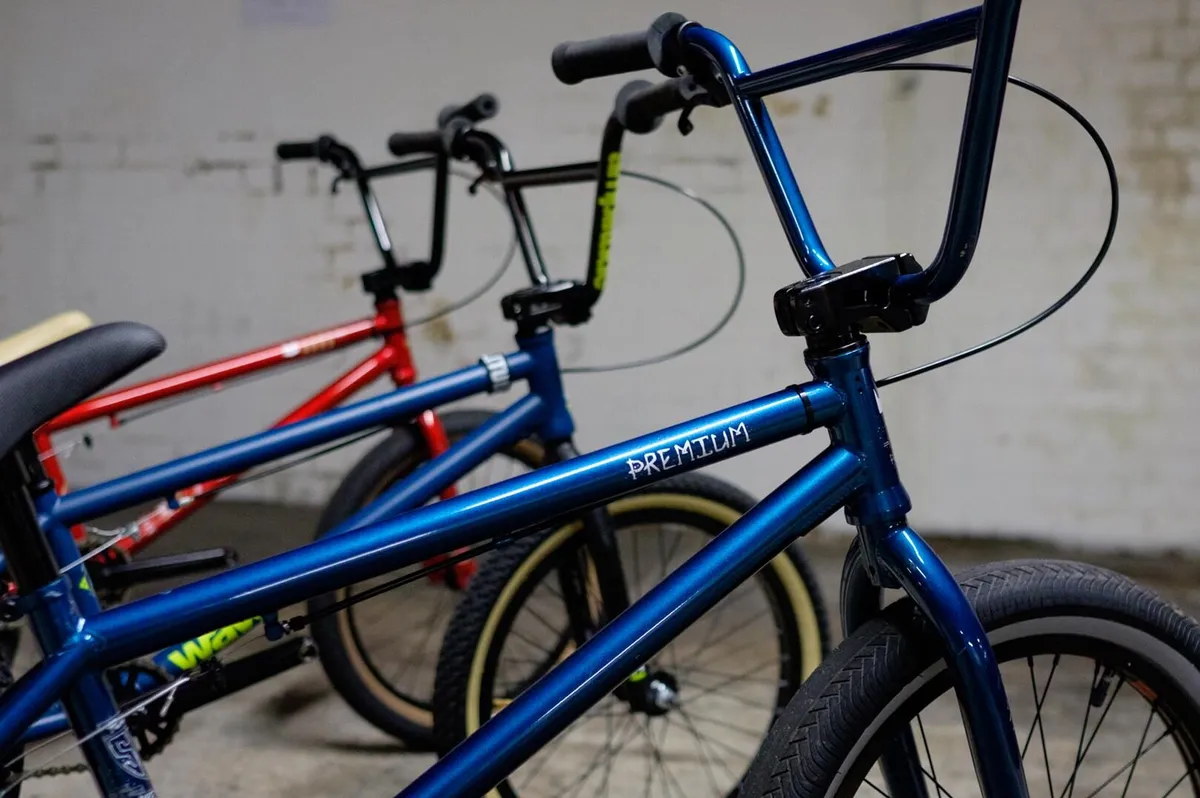Dirt jump bikes are the best type of mountain bike for riding skate parks, pump tracks and sculpted jumps.
Dirt jump bikes – also known as DJ bikes and dirt jumpers – are characterised by low-slung frames, 26in wheels, rear-only brakes and single-speed drivetrains.
They are almost always made from steel or aluminium and most have a suspension fork.
In this guide, we will look into what a dirt jump bike is, what they are made from, key geometry and component details, and what sets them apart from other mountain bikes and BMXs.
What is a dirt jump bike?

Dirt jump bikes are mountain bikes designed specifically for their performance on smooth, flowing jump lines.
Their compact design and small 26in wheels also enable them to excel in skate parks and pump tracks, where manoeuvrability and efficient speed generation through pumping is required.
Dirt jump bikes are commonly the bikes of choice for riders competing at slopestyle events, such as the FMB World Tour, and 4x races.
What are dirt jump bike frames made from?

Dirt jump bike frames have to be stiff and strong. Designed entirely for gravity-assisted riding, the best dirt jump bikes prioritise durability over weight. Two frame materials fit the bill.
Steel is the classic choice for high-end and bespoke dirt jumpers, and is used by some of the most iconic dirt jump brands, such as DMR.
It pays homage to early designs and is prized for its vibration-absorbing properties, retro looks and strength.

Aluminium frames are also very popular and often seen on modern, competition-focused models such as those from NS Bikes, Specialized, Canyon and many others.
Alloy provides a great strength-to-weight ratio and improved stiffness at a cheaper price point, making it a great choice for those looking for performance on a budget.
Dirt jump bike geometry

Dirt jump bikes are usually only offered in a one-size-fits-all option.
Their geometry is designed to provide effortless manoeuvrability through tight transitions and between jumps or pump track berms, while still offering enough stability for high speeds and big airtime.
Striking the middle ground between a BMX and a trail mountain bike, DJ bike geometry is certainly niche.

Reach measurements generally sit around the 420mm mark, making for a short and nimble front end. Head tube angles sit between 67 and 70 degrees, offering responsive steering for throwing tricks on steep take-offs.
Riders looking to ride very steep dirt jumps and tight skate parks will appreciate a dirt jumper with short chainstays.
On the other hand, if you ride fast pump tracks and jump parks, longer chainstays will provide more stability at speed. Luckily, due to their single-speed design, many dirt jump bikes offer adjustable dropouts, enabling you to effectively adjust their chainstay length (by a small amount) on the fly.
Do you need suspension on dirt jump bikes?

Almost all dirt jump bikes are hardtails, meaning they have no rear suspension.
A handful of full-suspension dirt jump bikes exist, but these are rarely seen outside of slopestyle or 4x events.

Although they aren’t designed to be used on rough trails, it's very common to see dirt jump bikes specced with a short-travel suspension fork. This is often set up very hard and helps take the edge off landings and harsh compressions.
These suspension forks have between 80 and 120mm travel, with 100mm being the most common.
Some brands, such as RockShox with its Pike DJ model, have specific dirt jump forks in their range. Other brands just spec shorter-travel versions of their regular forks.
Setting up your dirt jump suspension is usually a set-and-forget process, because you want your fork to be very stiff. You won’t need to adjust it once you’ve found your preferred settings.
Whereas on a trail or enduro bike, you would run your suspension fork with 15 to 20 per cent sag, it’s common to see dirt jumpers running 5 per cent sag or less.
Some dirt jump bikes are even specced with a rigid, BMX-style fork. While these further simplify the bike and can save weight and cost, most riders use a suspension fork for greater comfort and control.
Dirt jump bike components

Dirt jump bike components have to be tough. Weight is not an issue and the bike needs to be able to withstand crashes and heavy impacts – carbon components need not apply.
The typical dirt jump cockpit is short and wide, with 35 to 40mm stems and 740 to 780mm handlebars the norm.
Bar width is a personal choice and riders looking to throw tricks such as trail whips and barspins may want to cut their bars down.

While some complete dirt jump bikes are sold with front and rear brakes, many riders forgo the former in the name of simplicity and performance.
The front brake hose can easily get tangled up when performing tricks and, because dirt jumps often have good run-outs and are built on relatively flat gradients, the brakes are intended for use mainly when riding to and from the jump spot.
Therefore, most DJ bikes are specced with small 160mm rotors.
Dirt jumpers use BMX seats on slammed seatposts – these aren’t meant to be used when pedalling. The seat is there only for safety reasons and to hold while performing seat-grab tricks.
Wheels and tyres

Dirt jump bikes are the only form of modern mountain bikes still using 26in wheels.
The small wheel is perfect for the bike’s intended use, maximising manoeuvrability and responsiveness on tight terrain.
26in wheels are also very stiff and strong, able to withstand harsh landings and cased jumps.
Dirt jump tyres are often very slick, with a shallow tread.

This helps them to roll fast on smooth terrain and grip well on hard-packed jumps or concrete skate parks.
Dirt jumper tyres are run at high pressures and often with an inner tube, enabling riders to hit hard take-offs and berms without the tyre rolling or burping beneath them.
Dirt jump bike drivetrains

With simplicity and durability on gravity-assisted trails being the aim of the game, dirt jump bikes only need one gear. Single-speed setups with a small chainring, often 28t or smaller, and a tiny 9t rear cog, fit the bill perfectly, offering a gear that’s enough to get up to speed and coast from there.
Many riders opt to spec a wider 1/8in chain. These offer increased strength compared to a 3/32in chain (which are used on most multi-gear bikes).
If necessary, it's also relatively easy and inexpensive to change the gear ratio on a dirt jumper by swapping out the rear cog or chainring for a smaller or larger option.
What is the difference between BMXs and dirt jump bikes?

Compared to BMXs, dirt jump bikes lean more towards performance on jumps and pump tracks than all-round street riding.
With their larger 26in wheels, longer frame geometry and suspension forks, dirt jump bikes offer more stability and comfort, making them an obvious choice for high-speed riding on dirt.
